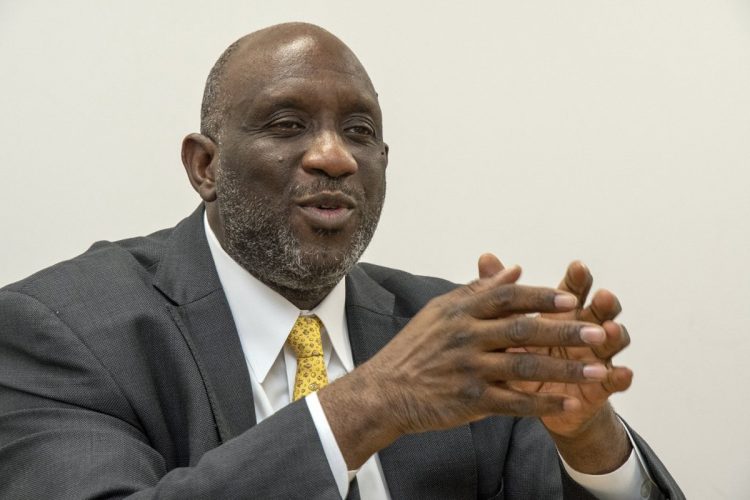
Kyoto Seika University President Oussouby Sacko, who hails from West Africa’s Republic of Mali, has drawn attention as the first African to head a Japanese university. To many, he represents the diversification and globalization of Japanese society.
The METI Journal asked what potential he sees in the world expo to be held in Japan. The journal was particularly curious about his views from the perspective of his field of expertise, spatial anthropology.
World expo as a bazaar
Question: In recent years, an established trend has been for world expos to adopt a theme of fighting issues on a global scale. In your view, what role should the expos play?
Sacko: The world expo has created opportunities for people to dream or think of the way they live by presenting aspects of a possible future society as though they are part of a fictional work.
We are in an age in which countries are deepening interdependency in terms of economy, not just initiatives to fight climate change, or food and resource issues. This, I believe, makes it all the more important for us to have a common understanding of issues by getting together in the same space at the same time.
Question: Expo 2025 Osaka, Kansai, Japan, will feature the concept “People’s Living Lab,” which brings together technologies and ideas that can help create the smart society envisioned by the Japanese government.
How can we take advantage of Kansai’s regional characteristics?
Sacko: The world expo is not just about showing off the latest technologies. I think it’s a good idea for an expo to prominently feature a communication style unique to the region that hosts it, reflecting the regional culture as well as geographical and climatic features.
What I mean by “communication style” is, for example, the typical way Osakans are able to close the distance with others and their love of festive atmospheres, which impressed me greatly when I first came to Japan. My view is based on the belief that the first step in addressing global issues is to deepen people’s mutual understanding through personal communication.
If each visitor experiences a major exhibit at an expo separately, it remains a relationship between a machine and a human being. It will be of value only when visitors share the experience with others.
To me, Japan and Kansai are synonymous. People of Osaka appear curious to learn about others. For example, when I am eating by myself at a restaurant, a stranger may talk to me, asking things like “You like it, huh?” So, I personally hope to see an expo feature Kansai-style communication and that it will promote interactions across national and generational boundaries through exchanges starting with locals asking, “Hey, is that machine fun?” or “Wow, your country has things like this?”
My image of the expo is a bazaar where everybody talks as much as they want about the latest technologies rather than creating a “People’s Living Lab” for the future society.
Question: So, you think warm Kansai-style interactions are not entirely unrelated to this expo’s theme of “Designing Future Society for Our Lives”?
Sacko: That’s correct. I understand the expo is envisioned as an opportunity to present Japan as it faces an aging society, but medical technology is not the only thing that can save lives.
When people suffer from diseases of mind or body, there are many factors that can cause suffering, including a feeling of isolation from an inability to interact with others and the collapse of a regional community.
In either case, a communication issue is typically at the root of the problem.
What spaces can do
Question: We have heard that your specialty, spatial anthropology, is based on the view that urban planning and home development can be realized through the usage of community spaces.
What role do you think the world expo should play from the academic perspective, considering that it is an occasion where people from around the world gather for a limited period?
Sacko: I have studied the role a physical space can play from the viewpoint of individuals and society.
Expo pavilions are created within the restrictions of the designs or comprehensive plans that countries and businesses have fleshed out according to their respective themes. However, my interest is rather in how you may create a space that is public or shared by people.
There are several viewpoints on how you may create a space that is conducive to more active communication.
Question: Can you elaborate on that?
Sacko: When someone occupies a space, it is typically the result of negotiation, so it is not necessary to divide it equally in a visible way from the beginning.
A research team I belonged to at Kyoto University studied the relationship between Kyoto residents and their next-door neighbors defined by how much area they covered during uchimizu (a popular practice of sprinkling water over the road in front of the house to cool the temperature).
We found that if the splash reached the section of road in front of their next-door neighbors’ house, then the residents typically included those next-door neighbors within their sense of the term, uchira (us). If they made sure the water didn’t reach the front of their neighbors’ house, then they called them achira-san (them). That indicated use of words reflected their behavior.


